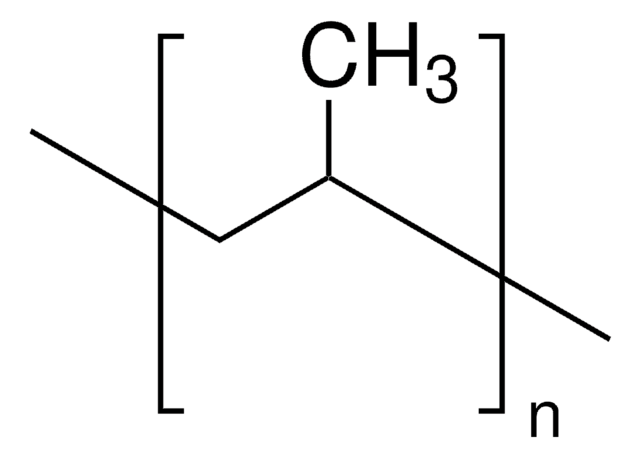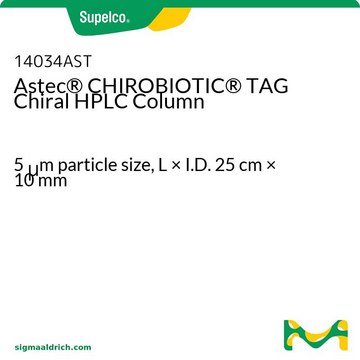53023AST
Astec® CLC-D Chiral (5 μm) HPLC Columns
L × I.D. 15 cm × 4.6 mm, HPLC Column
Synonym(e):
Chiral Separation CLC-D Column
About This Item
Empfohlene Produkte
product name
Astec® CLC-D Chiral HPLC Column, 5 μm particle size, L × I.D. 15 cm × 4.6 mm
Materialien
stainless steel column
Agentur
suitable for USP L32
Produktlinie
Astec®
Verpackung
pkg of 1 ea
Hersteller/Markenname
Astec®
Parameter
0-50 °C temperature
172 bar pressure (2500 psi)
Methode(n)
HPLC: suitable
L × ID
15 cm × 4.6 mm
Matrix
fully porous particle
Aktive Matrixgruppe
chiral bidentate ligand (D-form), requires 5 mM CuSO4 phase
Partikelgröße
5 μm
Porengröße
100 Å
Betriebs-pH-Wert
3.5-7
Trenntechnik
chiral
Allgemeine Beschreibung
Features:
- Separates α-hydroxy carboxylic acids, amino acids and other α-bifunctional compounds
- High selectivity with simple mobile phases
- Copper complex gives strong UV 254 nm signal
- Simple reversal of elution order, CLC-L vs. CLC-D
- Excellent reproducibility
(1) Davankov, V. A.; Rogozhin, S. V. Ligand chromatography as a novel method for the investigation of mixed complexes: Stereoselective effects in a-amino acid copper(II) complexes. J. Chrom. A. 1971, 60, 284-312.
Rechtliche Hinweise
Hier finden Sie alle aktuellen Versionen:
Besitzen Sie dieses Produkt bereits?
In der Dokumentenbibliothek finden Sie die Dokumentation zu den Produkten, die Sie kürzlich erworben haben.
Protokolle
Separation of DL-Tartaric acid, ≥99%
Verwandter Inhalt
Astec CLC Copper Ligand Exchange Chiral HPLC Columns. The Astec CLC phases are based on coupling an enantiomeric form of an amine to a proprietary Astec derivative to create an appropriate distance for copper coupling.
Chromatograms
application for HPLCapplication for HPLCUnser Team von Wissenschaftlern verfügt über Erfahrung in allen Forschungsbereichen einschließlich Life Science, Materialwissenschaften, chemischer Synthese, Chromatographie, Analytik und vielen mehr..
Setzen Sie sich mit dem technischen Dienst in Verbindung.






